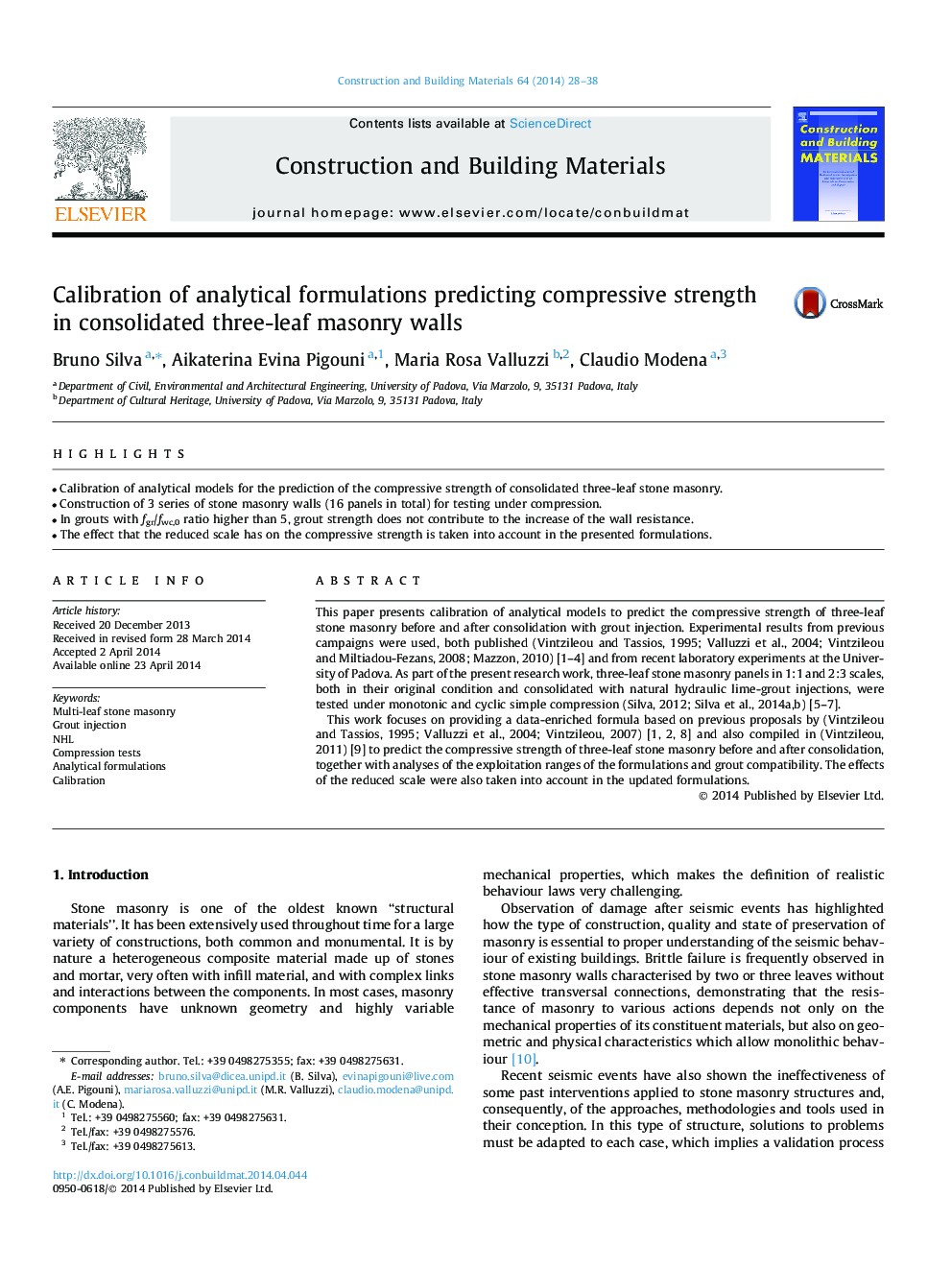| Article ID | Journal | Published Year | Pages | File Type |
|---|---|---|---|---|
| 257575 | Construction and Building Materials | 2014 | 11 Pages |
•Calibration of analytical models for the prediction of the compressive strength of consolidated three-leaf stone masonry.•Construction of 3 series of stone masonry walls (16 panels in total) for testing under compression.•In grouts with fgr/fwc,0 ratio higher than 5, grout strength does not contribute to the increase of the wall resistance.•The effect that the reduced scale has on the compressive strength is taken into account in the presented formulations.
This paper presents calibration of analytical models to predict the compressive strength of three-leaf stone masonry before and after consolidation with grout injection. Experimental results from previous campaigns were used, both published (Vintzileou and Tassios, 1995; Valluzzi et al., 2004; Vintzileou and Miltiadou-Fezans, 2008; Mazzon, 2010) [1–4] and from recent laboratory experiments at the University of Padova. As part of the present research work, three-leaf stone masonry panels in 1:1 and 2:3 scales, both in their original condition and consolidated with natural hydraulic lime-grout injections, were tested under monotonic and cyclic simple compression (Silva, 2012; Silva et al., 2014a,b) [5–7].This work focuses on providing a data-enriched formula based on previous proposals by (Vintzileou and Tassios, 1995; Valluzzi et al., 2004; Vintzileou, 2007) [1, 2, 8] and also compiled in (Vintzileou, 2011) [9] to predict the compressive strength of three-leaf stone masonry before and after consolidation, together with analyses of the exploitation ranges of the formulations and grout compatibility. The effects of the reduced scale were also taken into account in the updated formulations.
